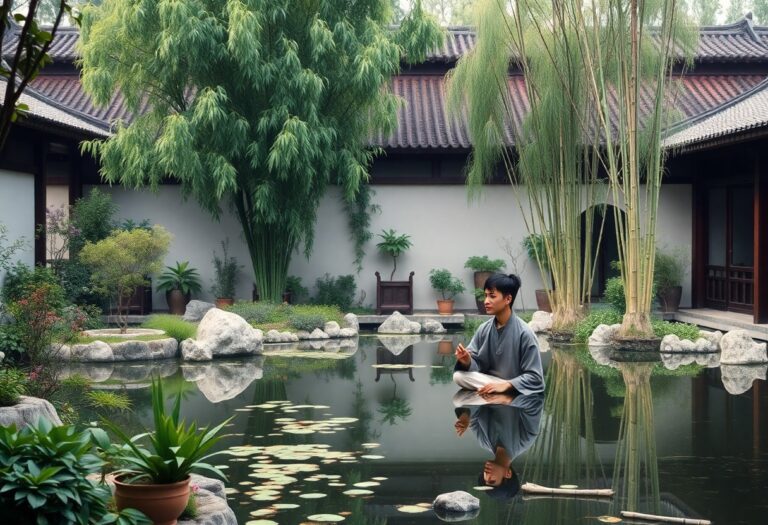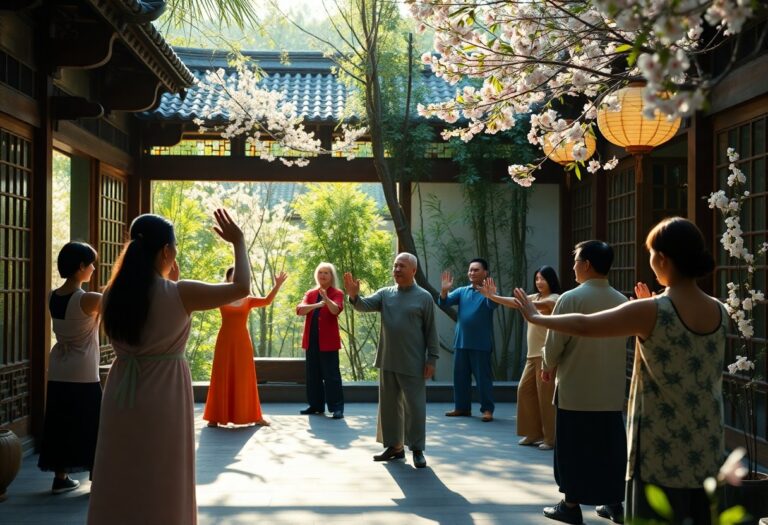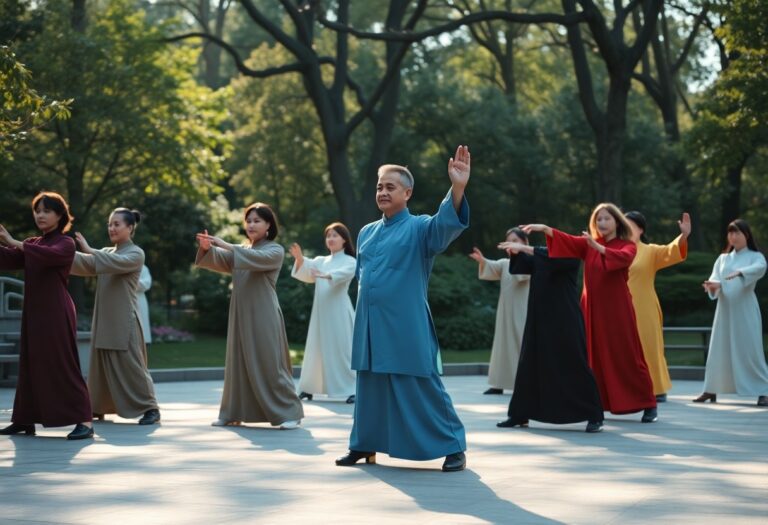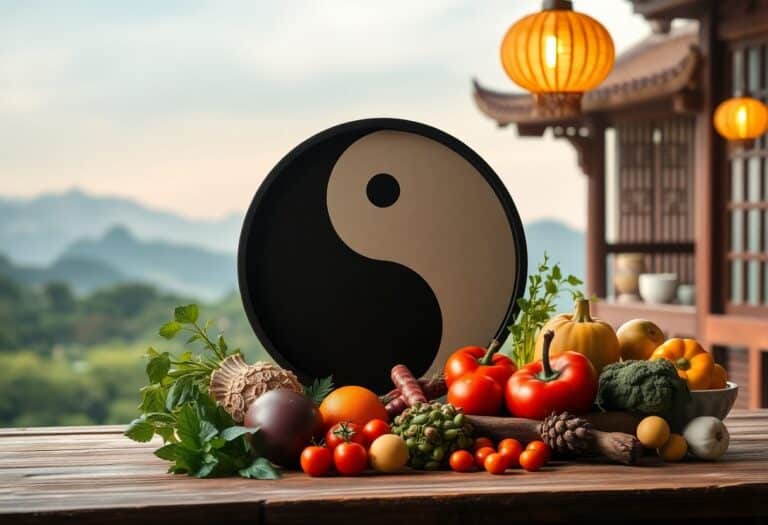Exploring Yin and Yang: Meaning, Symbolism, and Cultural Significance
The concept of Yin and Yang holds profound significance in various aspects of Chinese culture, philosophy, and medicine. This ancient duality, often described as As we delve into the meaning, symbolism, and cultural significance of Yin and Yang, we uncover its relevance that spans thousands of years and influences contemporary practices such as Traditional Chinese Medicine (TCM) and martial arts.

Understanding Yin and Yang
Definition and Origin of Yin and Yang
The concept of Yin and Yang originated in ancient Chinese philosophy, where it serves as a foundational principle illustrating the dualistic nature of existence. This philosophy describes how opposite forces, such as light and dark, are interconnected and interdependent. Yin represents qualities such as passivity, darkness, and receptivity, while Yang embodies brightness, activity, and assertiveness. The formal recognition of these terms is believed to have occurred around the 4th century BCE, during the Han dynasty, establishing the basis for various schools of thought within Chinese philosophy, including cosmology and metaphysics. The Yin-Yang symbol, also known as the Taijitu, visually represents this dynamic, highlighting the unity of opposites within a continuous cycle of transformation.
The Philosophy Behind Yin Yang
The philosophy of Yin and Yang embodies the idea of dualistic-monism, where the two opposing forces are perceived as complementary rather than conflicting. This principle emphasizes the ebb and flow of life, illustrating that everything in nature is in a constant state of flux. For example, day (Yang) seamlessly transitions into night (Yin), demonstrating the cyclical nature of existence. The balance between these forces is crucial for harmony and well-being; any imbalance can lead to disorder. This philosophy is also deeply rooted in Taoism, where the distinctions between good and bad are seen as perceptual rather than absolute. The concept of Yin and Yang serves as a reminder of the continuous transformation and interconnection within heaven and earth, urging individuals to strive for balance in their lives.
Yin and Yang in Traditional Chinese Medicine
In Traditional Chinese Medicine (TCM), the balance of Yin and Yang within the body is a cornerstone of health and wellness. Illness is often interpreted as an imbalance between these forces, prompting TCM practitioners to restore harmony through various treatments. Techniques such as acupuncture, herbal medicine, and dietary therapy are employed to assess and adjust the Yin-Yang qualities of a patient's condition. This philosophy underscores the interconnectedness of physical, emotional, and environmental factors in achieving overall well-being. TCM views the body as a microcosm of the natural world, emphasizing that the balance between Yin and Yang is essential for maintaining health and preventing disease. By recognizing the importance of these forces, individuals can foster a greater understanding of their own health and cultivate a lifestyle that promotes balance and harmony.
The Symbolism of Yin-Yang
The Yin-Yang Symbol Explained
The Yin-Yang symbol, known as the Taijitu, serves as a profound representation of the duality and interconnectedness inherent in the philosophy of Yin and Yang. The design, which is a circular figure divided into two teardrop-shaped halves—one black (Yin) and the other white (Yang)—encapsulates the essence of opposing forces. Each half features a dot of the opposite color, symbolizing that within Yin exists a seed of Yang and vice versa. This visual manifestation illustrates the dynamic balance that characterizes the natural world, emphasizing that these forces are not static but are in a continuous cycle of transformation. The circular shape itself signifies eternity, suggesting that the interplay of Yin and Yang is a fundamental aspect of existence.
Colors and Elements of the Yin Yang
The colors black and white in the Yin-Yang symbol are deeply symbolic, representing the qualities of Yin and Yang respectively. Black embodies attributes such as darkness, coldness, and femininity, while white signifies light, warmth, and masculinity. The small dots of opposite colors within each half of the yin-yang symbol illustrate the principle that neither force can exist in isolation. This interplay of colors reflects the broader concept of duality, where opposing forces are essential for creating balance and harmony in the universe. Through this lens, we can observe how the contrasting elements in nature and human life are interdependent, affirming the philosophy behind Yin and Yang as a guiding principle in understanding our surroundings.
Interconnectedness of Opposites
The Yin-Yang symbol encapsulates the profound concept of the interconnectedness of opposites, illustrating how all dualities are part of a greater whole. For instance, the existence of light is inseparable from that of dark; activity cannot happen without rest. This fundamental principle is vital for comprehending the dynamic relationships that characterize both nature and human life. In various philosophical and spiritual traditions, including Taoism, the notion that opposites are not merely separate but rather interdependent emphasizes the importance of achieving balance. By understanding this interconnectedness, individuals can gain insights into their own lives, striving for harmony through the interplay of Yin and Yang, ultimately fostering a sense of unity with the world around them.
Yin Yang in Different Cultures
Yin Yang in Chinese Culture
In Chinese culture, the philosophy of Yin and Yang is an integral part of daily life, influencing various areas such as art, medicine, and martial arts. This ancient concept symbolizes the balance and harmony necessary for well-being, serving as a guiding principle in the practice of Traditional Chinese Medicine (TCM). The Taijitu, or Yin-Yang symbol, is not only a visual representation of these opposing forces but also a reflection of how they manifest in cultural expressions. Various forms of art, from calligraphy to painting, often depict the interplay of light and dark, illustrating the essence of Yin and Yang. In addition, the principles behind these forces shape Chinese cosmology, affecting beliefs about the natural world and humanity's role within it. This interconnectedness highlights the significance of achieving balance in all aspects of life, reinforcing the teachings of ancient Chinese philosophy.
Influence of Yin and Yang on Asian Philosophies
The concepts of Yin and Yang have permeated various Asian philosophies, profoundly impacting traditions such as Buddhism, Shinto, and Confucianism. Within these systems, the interplay of opposites serves as a framework for understanding existence and the pursuit of harmony. For instance, in Buddhism, the balance of Yin and Yang aligns with the Middle Way, advocating for moderation and balance in life. This philosophy emphasizes the importance of navigating between extremes to achieve spiritual enlightenment. Similarly, Confucianism integrates the principles of Yin and Yang into its ethical teachings, highlighting the need for balance in social relationships and governance. The recognition of these dual forces facilitates a deeper comprehension of human interactions and the universe, illustrating the universal relevance of the philosophy of Yin and Yang across diverse cultures.
Yin Yang in Western Interpretations
In Western interpretations, the Yin-Yang symbol has been embraced as a representation of balance and duality, transcending its Eastern origins. Often utilized in various contexts such as psychology, art, and wellness practices, the symbol's appeal lies in its universal message of finding harmony amid opposing forces. As Western societies increasingly seek to integrate Eastern wisdom into their philosophies, concepts of Yin and Yang have found applications in modern practices, including holistic health and conflict resolution. This adaptation reflects a growing appreciation for the idea that balance between Yin and Yang is essential for personal well-being and societal harmony. By utilizing the insights from the philosophy of Yin and Yang, individuals in the West can cultivate a greater understanding of the interconnected nature of existence, ultimately promoting a lifestyle centered around balance and peace.
The Role of Qi in Yin and Yang
Understanding Qi and Its Connection to Yin Yang
Qi, often translated as “life force” or “vital energy,” is a fundamental concept in Chinese philosophy and is closely associated with the principles of Yin and Yang. It is believed that the organization and flow of Qi within the body and the universe are influenced by the balance of Yin and Yang forces. In Traditional Chinese Medicine, practitioners assess the flow of Qi to diagnose and treat imbalances, emphasizing the importance of maintaining harmony between these forces for optimal health and well-being. Understanding Qi provides insight into how the interplay of Yin and Yang can impact not only physical health but also emotional and spiritual aspects of life, reinforcing the interconnectedness of all living things.
Balancing Qi through Yin Yang Principles
Balancing Qi through Yin-Yang principles involves recognizing the dynamic interplay between these forces in various aspects of life. Techniques such as acupuncture, Tai Chi, and Qigong are employed to cultivate and harmonize Qi, promoting overall health and vitality. By understanding the Yin-Yang qualities of different situations, individuals can make informed choices to restore balance and enhance their well-being, as explained in various encyclopedias of traditional wisdom. This holistic approach underscores the interconnectedness of mind, body, and environment in achieving harmony. The practice of aligning one's Qi with the principles of Yin and Yang encourages a lifestyle that values balance, allowing individuals to navigate life's challenges with greater ease and resilience.
Applications of Qi in Daily Life
Qi can be applied in daily life through practices that promote balance and harmony. Mindfulness, meditation, and physical activities like Tai Chi and yoga are effective ways to cultivate Qi and maintain equilibrium between Yin and Yang. Additionally, dietary choices that align with Yin-Yang principles can enhance health by promoting balance within the body. Understanding the flow of Qi and its relationship with Yin and Yang can empower individuals to make lifestyle choices that support their well-being and foster a deeper connection with the natural world. By integrating these practices into everyday routines, individuals can harness the power of Qi to create a more harmonious existence, reflecting the profound wisdom embedded in the philosophy of Yin and Yang.
Modern Applications of Yin Yang
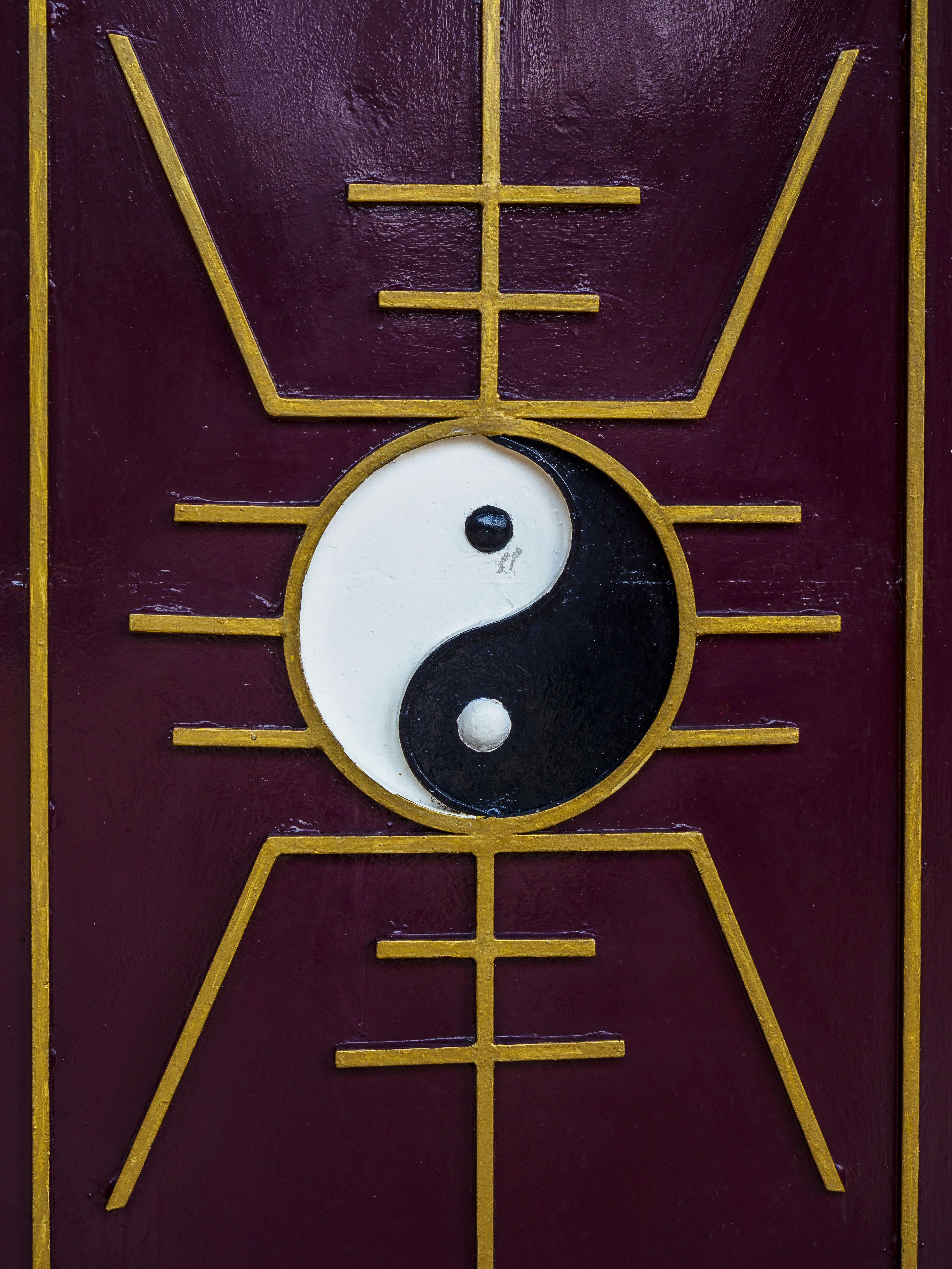
Yin Yang in Contemporary Wellness Practices
In contemporary wellness practices, the principles of Yin and Yang are frequently applied to promote holistic health. Many fitness routines, such as yoga and Pilates, incorporate the balance of opposing forces, emphasizing the importance of strength (Yang) and flexibility (Yin). Additionally, wellness therapies like acupuncture and herbal medicine utilize the Yin-Yang framework to address imbalances within the body. This integration of ancient philosophy into modern health practices reflects a growing recognition of the value of holistic approaches to well-being. By embracing the balance between Yin and Yang in these practices, individuals can foster a greater sense of harmony and overall wellness in their lives.
Influence on Art and Design
The Yin-Yang symbol has profoundly influenced art and design, serving as a powerful motif that conveys balance and harmony. Artists and designers often incorporate the Taijitu into their work to symbolize the interplay of opposites and the pursuit of equilibrium. This symbolism can be seen in various forms, from traditional Chinese art to modern graphic design. The aesthetic qualities of the Yin-Yang symbol, with its contrasting colors and dynamic shapes, continue to inspire creativity and innovation across cultures. By utilizing the principles of Yin and Yang, artists can explore themes of duality and interconnectedness, enriching the cultural narrative through their creative expressions.
Yin Yang in Conflict Resolution
In conflict resolution, the principles of Yin and Yang provide a framework for understanding and addressing opposing viewpoints. By recognizing the interconnectedness of differing perspectives, individuals can work towards finding common ground and achieving harmony. The Yin-Yang philosophy encourages a collaborative approach to conflict, emphasizing the importance of balance and mutual understanding. This application of ancient wisdom in contemporary settings highlights the enduring relevance of Yin and Yang in fostering positive relationships and resolving disputes. By integrating these principles into dialogue and negotiation, individuals can cultivate a more peaceful and constructive environment, reflecting the core values of the philosophy of Yin and Yang.
Q: What does the yin yang symbol represent?
A: The yin yang symbol, represented by the taijitu, illustrates the dualism in nature, showcasing the interconnectedness of all things by depicting the balance between opposite or contrary forces, such as dark and light, yin and the yang.
Q: How does the concept of yin and yang relate to Taoist philosophy?
A: In Taoist philosophy, often referred to as Tao, the concept of yin and yang is central to understanding the cosmos and human existence. It emphasizes that yin and yang exist as inseparable entities, illustrating how they transform into one another and contribute to the balance of life.
Q: Can you explain the meaning behind the colors in the yin yang symbol?
A: The yin yang symbol features a black section, representing yin, and a white section, representing yang, as detailed in an encyclopedia of Chinese philosophy. The white of yang symbolizes brightness, activity, and masculinity, while the dark aspect represents stillness, receptivity, and femininity. Together, they embody the dual aspects of existence.
Q: How is the concept of yin and yang used in divination?
A: In traditional Chinese divination practices, the principles of yin and yang help interpret the balance of energies in a person's life, reflecting the teachings found in ancient ching texts. The understanding of whether one is more influenced by yin or yang can guide decisions and reveal insights into personal circumstances.
Q: What is the historical significance of yin and yang in Chinese thought?
A: The yin yang concept has deep roots in early Chinese thought and cosmological texts, such as those attributed to Dong Zhongshu. It represents a foundational idea that has influenced various aspects of Chinese philosophy, medicine, and astronomy throughout history.
Q: How does the yin yang symbol illustrate the concept of finding balance?
A: The yin yang symbol serves as a reminder that balance is essential in life. It illustrates that yin and yang cannot exist without each other, and achieving harmony requires recognizing the interplay between these forces, whether in personal health, relationships, or the environment.
Q: In what ways does yin and yang influence modern practices?
A: The principles of yin and yang continue to influence various modern practices, including acupuncture, feng shui, and holistic health approaches. These practices often aim to restore balance and harmony by considering the dualistic nature of energies in the body and surroundings.
Q: How can one apply the principles of yin and yang in daily life?
A: Individuals can apply the principles of yin and yang in daily life by seeking balance in their activities, emotions, and environments. This might involve recognizing when to take action (yang) versus when to rest (yin), or understanding the need for both social interaction and solitude.
Q: What role do the Chinese characters play in understanding yin and yang?
A: Chinese characters related to yin and yang encapsulate complex ideas of dualism and balance. The characters for yin (阴) and yang (阳) convey not only the meanings of shadow and light but also the deeper philosophical concepts associated with these forces in Chinese culture.
Q: How do the ideas of yin and yang relate to the cycles of nature?
A: The ideas of yin and yang are closely tied to the cycles of nature, such as the transition from day to night. The interplay of yin (darkness) and yang (light) reflects the natural rhythms of existence, emphasizing that each phase transforms into the other, creating a continuous cycle of change.


